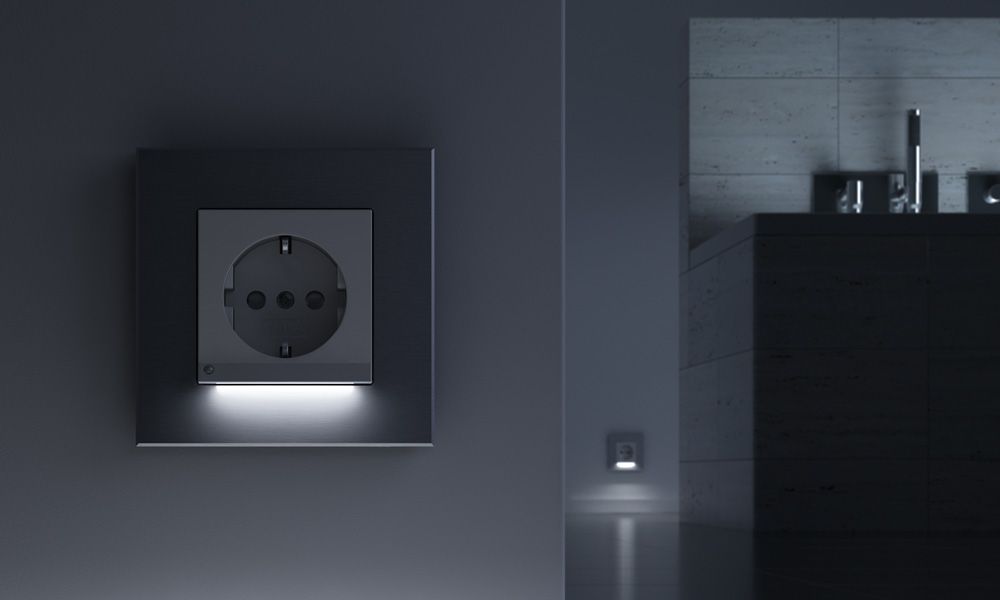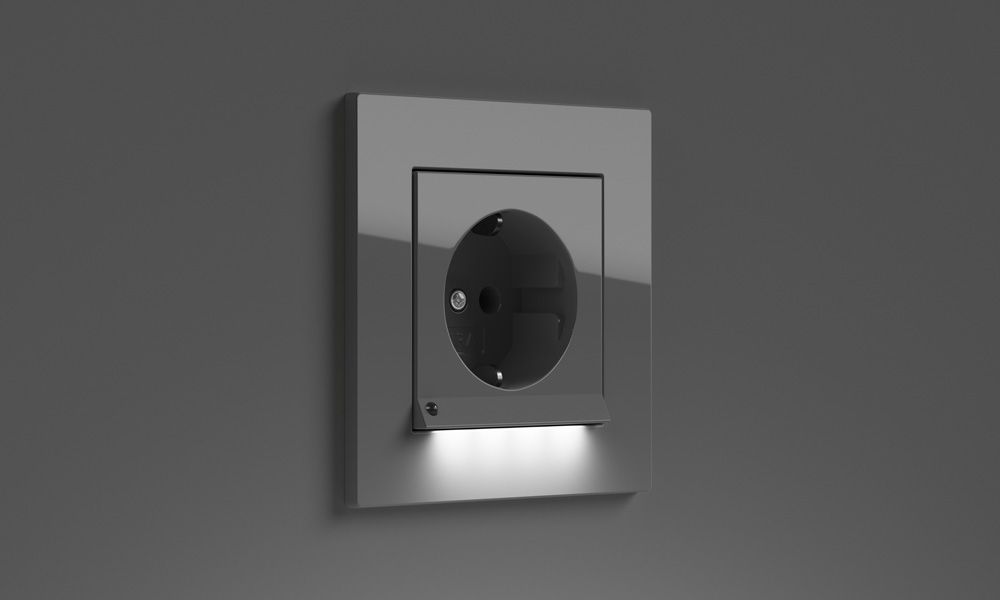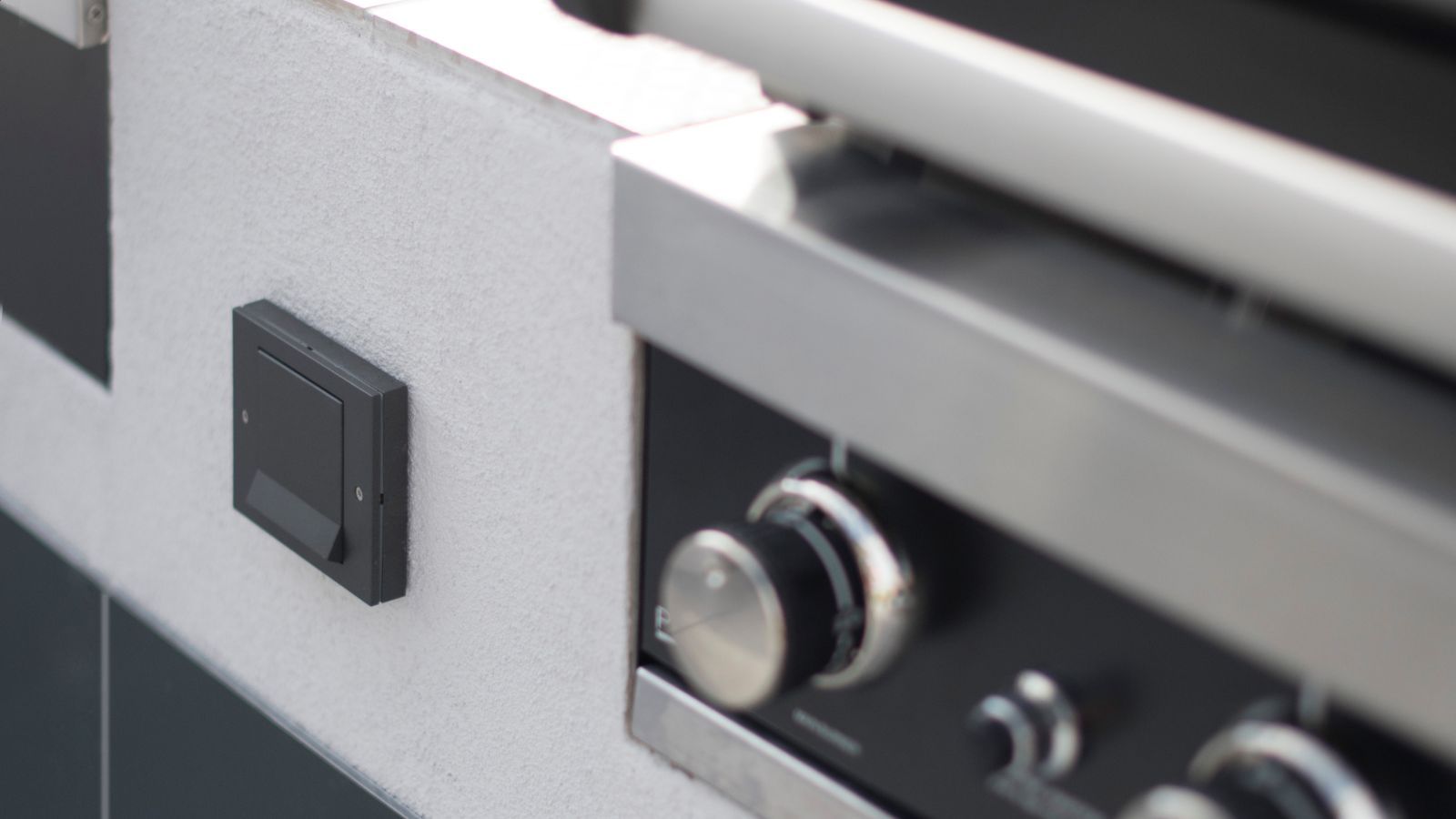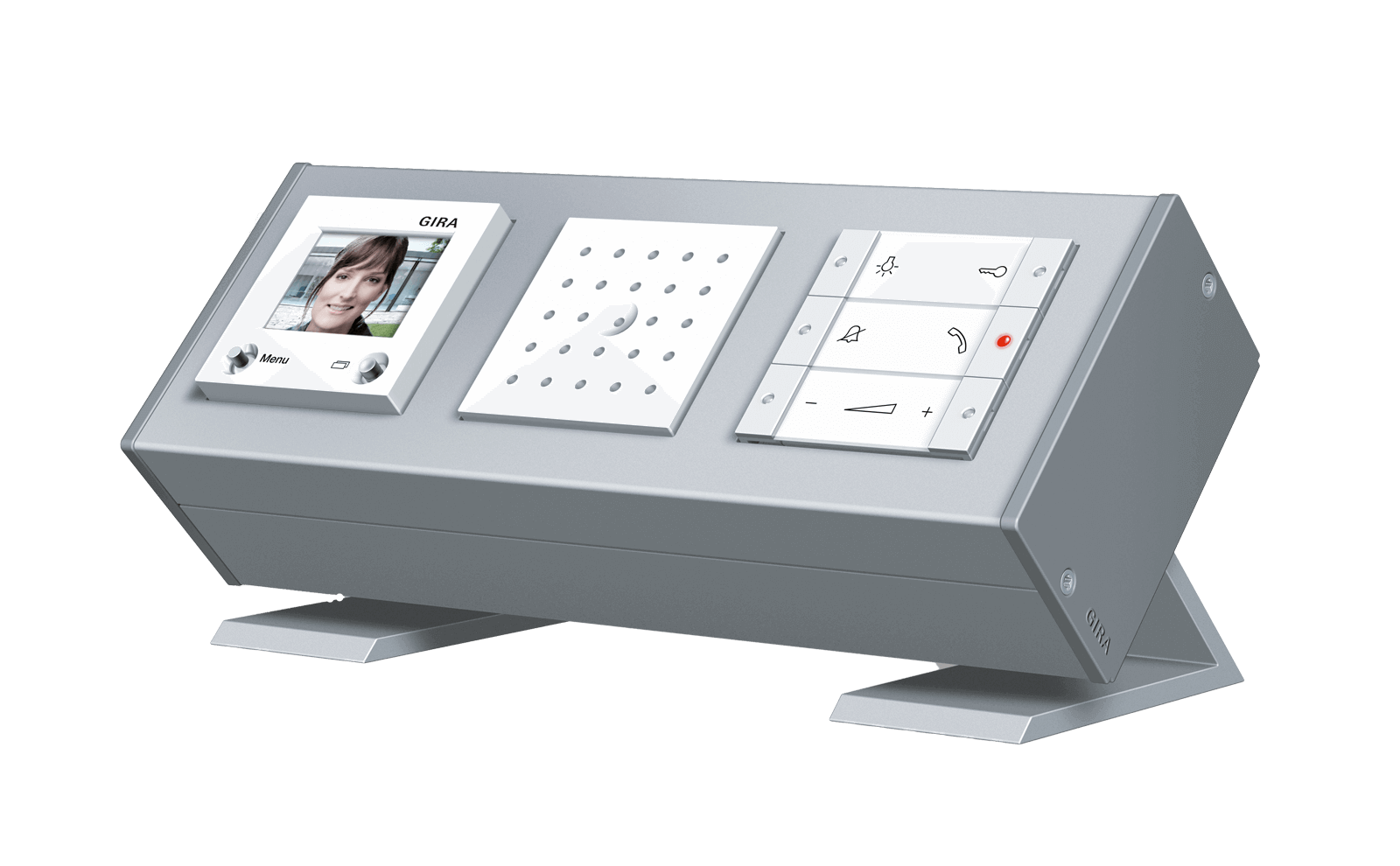
There are more and more possibilities to use modern technology in everyday life. But integrating new electrical devices at home will only work with an adequate power supply. So, how many socket outlets per room are ideal? Here’s what you should consider when planning your installation.
It doesn’t matter if you’re building a new house or renovating an older one: the lighting and power layout always poses a challenge. As Smart Home solutions become increasingly accessible, the demand for switches and socket outlets continues to grow. Most conventional houses do not include enough connections. According to recent surveys, 50 % of new homeowners realise they require additional outlets within twelve months after moving in. But extension cables or multiple plugs are neither practical nor aesthetic in the long run. Hence, you should figure out early on how many outlets per wall will suit your needs best.
Basic standards for the number of socket outlets at home
Before getting started, take a look at the general guidelines in your respective country. In the UK, for example, electric installations must adhere to the BS 7671 IET Wiring Regulations. These state that wherever mobile equipment is used, it should be “fed from an adjacent and conveniently accessible socket outlet, taking account of the length of flexible cable normally fitted to portable appliances and luminaires”.
Simply put: make sure you have a power supply in reach for every electrical device, without additional extension cables.
Planning your electrical layout: from the bedroom to the garden
Based on the recommendations outlined above, here's an overview on the ideal number of socket outlets per room:
Living rooms of 20+ square metres: 20 + 4 socket outlets
In living room areas, you need outlets for your TV, sound system, and other electronic devices. Keep your options open: in case you ever want to rearrange furniture, your equipment might end up in another corner across the room.Kitchen: 10 + 5 socket outlets
Kitchens tend to feel crowded quickly, with lots of appliances competing for the nearest power connection. Apart from the oven, stove, dishwasher, and fridge, you might also use a microwave, coffee machine, mixer, toaster – the list goes on and on. Your outlets should be distributed evenly so that there’s always (at least) one in reach.
Bathroom (small): 2 + 2 socket outlets
Compared to kitchens, electrical installations for bathrooms require a lot less effort. Two outlets next to the mirror are enough to power devices such as hairdryers and razors. We recommend two additional plugs close to the floor. You should take care that all four will be protected from splashes of water.
Based on the recommendations outlined above, here's an overview on the ideal number of socket outlets per room:
Living rooms of 20+ square metres: 20 + 4 socket outlets
In living room areas, you need outlets for your TV, sound system, and other electronic devices. Keep your options open: in case you ever want to rearrange furniture, your equipment might end up in another corner across the room.Kitchen: 10 + 5 socket outlets
Kitchens tend to feel crowded quickly, with lots of appliances competing for the nearest power connection. Apart from the oven, stove, dishwasher, and fridge, you might also use a microwave, coffee machine, mixer, toaster – the list goes on and on. Your outlets should be distributed evenly so that there’s always (at least) one in reach.
Bathroom (small): 2 + 2 socket outlets
Compared to kitchens, electrical installations for bathrooms require a lot less effort. Two outlets next to the mirror are enough to power devices such as hairdryers and razors. We recommend two additional plugs close to the floor. You should take care that all four will be protected from splashes of water.
Kids‘ room: 8 + 3 socket outlets
How many outlets per room are enough for children? This may change over time, as toddlers turn into teenagers glued to their smartphones, computers etc.
But your kids won’t stay at your house forever: keep in mind that the setup of their rooms should be suitable for other purposes once they have grown and moved out.
Home office: 8 + 2 socket outlets
In your study, you will need power supplies for a variety of devices: computer, monitor, scanner, printer etc. More is more in this case – especially when you’re working from home on a regular basis.
Bedroom: 3 + 2 socket outlets
Even in bedrooms, you won’t get by without a few reachable outlets. We recommend installing at least two next to each side of the bed: one for lighting, and one to charge your phone or other mobile devices overnight.
Outdoor area: 7 + 1 socket outlet
Don’t forget the garden, balcony, or terrace when designing your layout. Outdoor socket outlets prove useful in various ways: apart from the lawn mower or hedge trimmer, you might also need power supplies for your barbecue or radio.
Extra tip: Mobile devices are virtually indispensable nowadays – not only on the road, but also at home. Ideally, you should include several charging stations in your electrical setup. After all, nothing’s more annoying than your phone dying at the most inconvenient time.
Planning for the future: how many outlets per room can you retrofit?
You don’t get along with the existing socket outlets in your house? No worries: retrofitting your electrical installation does not necessarily require extensive renovation work. Instead of outlets built into the wall, you can opt for surface-mounted solutions. The Gira Profile 55, for example, comprises up to eight empty units. These are not only suitable for socket outlets. You may also add other inserts from the Gira System 55: switches, dimmers, radio wall transmitters, or even door communication functions.
More than a simple plug: clever innovations
Throughout the last few years, socket outlets have become increasingly versatile. First and foremost, they still serve as a power supply. But modern variants offer much more than that.
How about a socket outlet with integrated USB connections for mobile devices? This space-saving solution allows you to charge your smartphone or tablet without any adapters.
Socket outlets with LED orientation lights, on the other hand, guide you along through the dark: they subtly illuminate the floor in your hallway at night, ensuring you won’t trip and fall. Thanks to smart sensors, the glare-free lighting automatically switches on at twilight – and off again in the morning.


